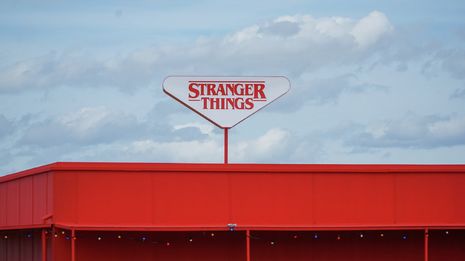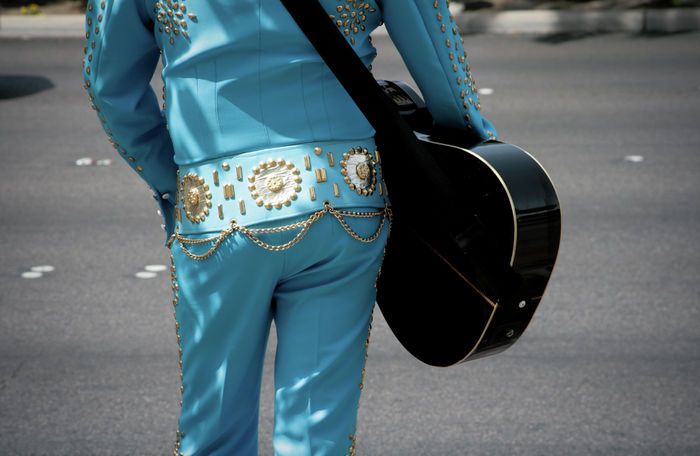A powerful, promising, penultimate season: Stranger Things 4
Clarissa Salmon and Famke Veenstra-Ashmore team up to give their verdict on the much-discussed fourth season of Netflix’s Stranger Things

Content Note: Discussion of death, suicide, drug use and eating disorders
This review contains heavy spoilers for Stranger Things 4
After nearly three years of tense anticipation, Stranger Things 4 hit Netflix with its darkest season yet. Gone are the baby faces of season one, replaced with a tense atmosphere that pushes the show closer to the horror genre than ever before. The ‘real world’ elements of the show also follow this darker tone. Our heroes must combat suicidal thoughts, drug use and eating disorders as well as supernatural threats. The Duffer Brothers weave their most sophisticated plot to date: finally the compartmentalised evils of the previous seasons are united through an ultimate enemy. Unlike the previously victorious finales, episode eight sees new villain Vecna/One/Henry Creel (Jamie Campbell Bower) still at large and Hawkins permanently marred by the Upside down.
Of this instalment’s many new characters, one in particular garnered universal praise. Eddie Munson (Joseph Quinn), a failed highschool student and Dungeons & Dragons master, helps balance this season’s darkness and his witty repartee with Dustin recalls the long-standing success of the Dustin/Steve duo. One of the season’s most viral moments was his guitar performance of Metallica’s ‘Master of Puppets’; it’s second in internet fame only to Max’s flight from Vecna, set to ‘Running up that Hill’ by Kate Bush. This scene was so popular that it launched Bush’s single to number 1 in the charts, flooding TikTok For You pages worldwide.
“Be brave, Duffer Brothers: deaths in TV shows can be really impactful”
Sadie Sink portrays Max’s desperation with a heart-rending authenticity that makes her performance a standout of the series. Her monologue in ‘Dear Billy’ (episode four) is another superb moment, depicting grief in all of its complexity. However, other recurring characters fell slightly flat. While season one Mike jumped off a cliff to save Dustin from bullies and searched for Will every single day, in season four he doesn’t notice his friend’s tears when they’re less than a metre apart. The traits that once made him a fan-favourite are nowhere to be found. Will reassures him ‘you’re the heart’, but the writing suggests otherwise.
Mike’s increasingly two-dimensional character can be partially attributed to the far-fetched (but fun) subplot in which he, Will, Jonathan and new character Argyle journey across California in search of Eleven in a pizza van. With so many individuals in the story, tenuous plots and under-developed characters are inevitable issues. However, there seems an easy solution to the ever increasing ensemble of characters who must be corralled into subplots, which its writers never quite seem bold enough to take.
hard to pick just 10 moments from s4, but if i had to it'd be these pic.twitter.com/QmX4XBtmGg
- Stranger Things (@Stranger_Things) July 29, 2022
Be brave, Duffer Brothers: deaths in TV shows can be really impactful. Fake deaths fall flat, and all suspense is lost with the absence of genuine stakes. The return of Hopper, revealed in the trailer material, undermines his tragic, impactful sacrifice in season three. The drawn-out Russia storyline which ensues exacerbates this. There’s a sense that despite their touching reunion, this thread of the storyline was unnecessary, implemented only because these two original characters were ‘owed’ a continuation of their arcs.
“With so many individuals in the story, tenuous plots and under-developed characters are inevitable issues”
Equally, Max’s extremely emotional and superbly acted death in Volume 2 does not even have one episode to resonate before her survival is revealed. Sadie Sink and Caleb McLaughlin’s incredible chemistry and lauded performances are compromised by the poor pacing and writing which prevents the potential of their impact being reached. Eddie’s sacrifice, whilst devastating, felt a little pointless and rushed. Perhaps it was the widespread predictions which jaded my perception, but there was no surprise towards the circumstances of his death. Indeed, the show does not fully take advantage of its place in the horror genre – even the show’s own stars have teased the Duffer Brothers for their lack of commitment in killing off characters.
One massive difference from previous seasons was the decision to split the episodes into two instalments. Leaving this gap allowed for predictions and debates to arise, harnessing the power of social media in a way not experienced by the show before given its usual mass release. It also enabled stand-out moments space to go viral, before being taken over by Volume 2’s stellar points. Indeed, the six episode Volume 1 felt measured and even, following each strand of the quad-plot diligently and building up anticipation for the finale.
me sprinting to go watch it again as we speak https://t.co/h3l5kHQE7u pic.twitter.com/QtpI77Wlv6
- Stranger Things (@Stranger_Things) July 27, 2022
Many plot elements came to a head in Volume 2’s opening: Eleven’s relationship with Papa and his (literally) explosive death, the recapitulation of the California gang, and Hopper and Joyce’s reunification. But in the second episode, a two-and-a-half hour finale essentially became a feature film. At first, it does seem slightly indulgent, but perhaps it was needed to tie all the plots together and provide adequate space for ‘tying loose ends’. Hopper and Eleven’s reunion was a nice touch, but the timeskip felt artificial and arresting in the face of such a long episode. An absence of explanation as to what occurred in these two days left the last sequence feeling flat and anti-climactic. Some beats hit – Dustin’s dialogue with Eddie’s uncle, for example, was thoughtful and moving.
Stranger Things 4 had a renewed emotional resonance resembling the lauded original season, strengthening existing characters, and introducing a thoughtful and complex villain which tied into the pre-established order of the show without seeming forced. Characters were introduced (and killed off, occasionally) at the right moments, and the use of music and sound effects reinvigorated the show. Stranger Things 5, then, promises to close the overall story on a complex note. It’s going to require a lot to neaten up the ends of these characters, and we’re excited to see where they end up, or should we say (Upside) Down.
 News / CUP announces funding scheme for under-represented academics19 December 2025
News / CUP announces funding scheme for under-represented academics19 December 2025 News / SU reluctantly registers controversial women’s soc18 December 2025
News / SU reluctantly registers controversial women’s soc18 December 2025 News / Cambridge welcomes UK rejoining the Erasmus scheme20 December 2025
News / Cambridge welcomes UK rejoining the Erasmus scheme20 December 2025 Features / Should I stay or should I go? Cambridge students and alumni reflect on how their memories stay with them15 December 2025
Features / Should I stay or should I go? Cambridge students and alumni reflect on how their memories stay with them15 December 2025 Film & TV / Timothée Chalamet and the era-fication of film marketing21 December 2025
Film & TV / Timothée Chalamet and the era-fication of film marketing21 December 2025











